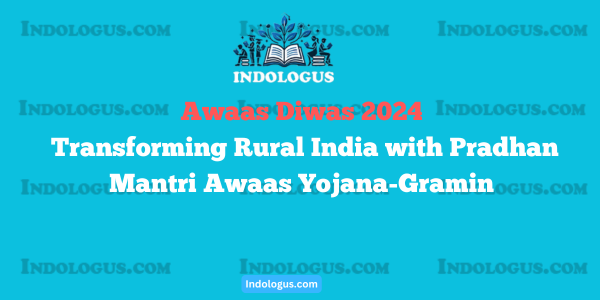The Ministry of Rural Development marks Awaas Diwas 2024, commemorating the 8th anniversary of the Pradhan Mantri Awaas Yojana – Gramin (PMAY-G). Launched by Prime Minister Narendra Modi on November 20, 2016, PMAY-G underscores the government’s commitment to achieving “Housing for All” by 2029. This initiative is not just about constructing houses; it aims to uplift marginalized communities and empower rural India.
Key Achievements and Features of PMAY-G
1. Target Expansion: 2 Crore More Houses by 2029
- Scope Expansion: The scheme, initially targeting 2.95 crore houses by 2023-24, has been extended to include 2 crore additional houses with a total outlay of ₹3.06 lakh crore for FY 2024-29.
- Yearly Budget: ₹54,500 crore is allocated for FY 2024-25 to accelerate implementation.
2. Inclusivity and Beneficiary Identification
- Relaxed Eligibility Criteria:
- Reduced exclusion criteria from 13 to 10 (e.g., ownership of motorized two-wheelers or fishing boats removed).
- Income eligibility raised to ₹15,000 per month.
- Transparent Selection Process: Beneficiaries are identified via SECC 2011 and Awaas+ 2018 surveys, verified by Gram Sabhas.
3. Technological Innovations
- The Awaas+ 2024 mobile app ensures:
- Aadhaar-based face authentication for transparent beneficiary identification.
- Access to 3D house designs in collaboration with the Central Building Research Institute (CBRI).
4. Financial Assistance and Direct Benefit Transfer (DBT)
- Assistance of ₹1.20 lakh in plain areas and ₹1.30 lakh in North-Eastern and Hill States.
- Funds disbursed directly to beneficiaries through DBT, ensuring efficiency and accountability.
Empowering Rural India
1. Women Empowerment
- 74% Ownership by Women: Most houses are owned by women, either solely or jointly, with aspirations for 100% female ownership in the future.
2. Employment Generation
- Skilled Workforce: Nearly 3 lakh rural masons trained in disaster-resilient construction, enhancing their employability.
3. Convergence with Other Schemes
PMAY-G integrates with:
- MGNREGA for wage employment.
- Swachh Bharat Mission (SBM-G) for sanitation facilities.
- Jal Jeevan Mission for potable water supply.
- Surya Ghar for solar energy.
4. Tribal and Landless Beneficiaries
- Special focus on tribal development through Dharati Aaba Tribal Village Utkarsh Abhiyan, benefiting 5 crore tribal people in over 63,843 villages.
- Housing and land allocated to 2.88 lakh landless beneficiaries over the past decade.
Social Equity and Resilience
1. Focus on Marginalized Communities
- SC/ST Representation:
- 60% of houses reserved for SC/ST households, with nearly 59.58 lakh SC houses and 58.57 lakh ST houses completed.
- Differently-Abled Beneficiaries: 5% of targets reserved.
- Disaster-Affected Families: Dedicated allocation for those impacted by natural calamities like Cyclone Fani.
2. Resilient and Hygienic Homes
- Minimum house size: 25 sq. mt., including hygienic cooking spaces.
- Disaster-resilient designs ensure safety and sustainability.
Conclusion
PMAY-G is not merely a housing scheme; it is a movement to empower rural India, promote social equity, and uplift marginalized communities. By providing secure and resilient homes, the initiative is building stronger lives and contributing to a prosperous, inclusive future.
Key Takeaway for Competitive Exams:
Students preparing for exams like UPSC, SSC, and state public service commissions should note the scheme’s objectives, achievements, and convergence with other initiatives. It is a vital example of inclusive rural development and governance in India.



